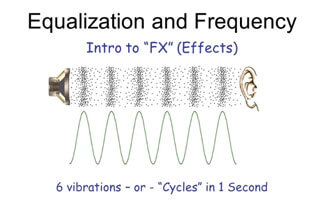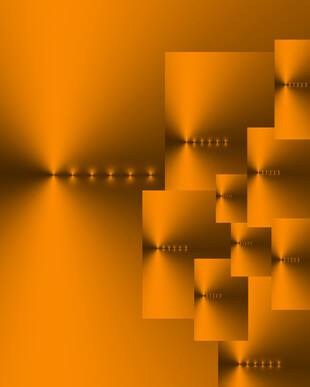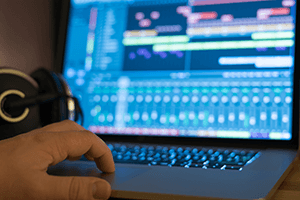The word “distortion” sounds inherently bad. Even the definition of the word in the dictionary suggests it is some wrong version of something else:-P. But guitarists have been using it to create cool sounding electric tones for decades. So in the audio world, distortion can often add character and something interesting to your sound.
When mixing down your recordings, the use of subtle harmonic distortion (not the big fat distortion sound from guitar pedals) can lend some interesting character to your final audio.
Check out how you can benefit from harmonic distortion in this article from Audiofanzine: Click here for that post
Recording Tips and Techniques
Some Tips To Quickly Improve Your Audio With EQ
 Equalization, or “EQ” for short, is one thing that can really differentiate a beginner mix from an expert one. Part of the reason for this is that it SEEMS like such a difficult topic to wrap your head around if you are not an engineer or audio techie.
Equalization, or “EQ” for short, is one thing that can really differentiate a beginner mix from an expert one. Part of the reason for this is that it SEEMS like such a difficult topic to wrap your head around if you are not an engineer or audio techie.
But part of the reason for that is the same old issue of making fairly simple concepts appear overly complicated.
Folks with experience and some basic EQ knowledge understand exactly what they are trying to do before they reach for those EQ controls. When I first started, I didn’t have a specific objective in mind (like, say, stop the low guitar notes from covering up the bass guitar notes). I would just use a preset and if it sounded decent, I’d use it. No bueno. EQ is a powerful tool and can mess things up if you don’t know some things.
But those things are not that difficult. For a quick primer on what EQ is, see my video (an excerpt from The Newbies Guide To Audio Recording Awesomeness) here:
That should help a lot. Then you can get some great tips from Graham over at Recording Revolution at the following link:
Click here to read more…
Home Studio Defined
Since recording in such a studio is restrictively costly for most performers, you might need to consider more moderate choices for the present — like setting up a home studio. Click here to read more…
Reverb Effect Has Many Uses In A Music Mix

Most people know what reverb sounds like at its most basic. All by itself on a single track it can make a voice sound like it’s in an empty gymnasium, a cavern, a bathroom, or any number of different kinds of spaces. When I was in college I used to play guitar and sing in the stairwell because of the reverb sound in there. Weird Al recorded some of his early pieces (back in the Dr. Demento days) in a bathroom for its natural reverb.
It’s something that my wife (Lisa Theriot) does not like when I put too much of it on her voice in a recording. When I first started recording, I used to put it on everything. I used too much because I liked how it sounded. But I ended up making the mixes sound muddy and, well, reverby. As usual, my wife was right. Too much reverb can mess things up. It’s actually a common thing for beginners to do – use too much of just about every effect they get their hands on, especially reverb and compression.
But there are other uses for reverb than to make a voice or instrument sound like it was recorded in a concert hall (or canyon, or whatever). Used in a bunch of different subtle ways, it can help certain move certain sounds around in a mix, appearing to come from further away or closer, from the left or right. It can give more space to some sounds and blend multiple other sounds to appear more amorphous.
In this article, Adrian calls reverb “the most essential” effect. Find out why by reading the entire article here: http://audio.tutsplus.com/articles/general/why-reverb-is-the-most-essential-effect-in-your-toolkit/
Digging Into Digital Recording
 In case you didn’t already know this – if we are recording audio into our computers, we’re doing digital recording. This is as opposed to analog audio recording, which is another way of saying the way we used to do it before computers (and I include a “digital recorder” as a form of a computer) came around. Before we had easy access to those things, we had to use tape to record audio. And before that, we had to record audio direct-to either wire, vinyl or wax.
In case you didn’t already know this – if we are recording audio into our computers, we’re doing digital recording. This is as opposed to analog audio recording, which is another way of saying the way we used to do it before computers (and I include a “digital recorder” as a form of a computer) came around. Before we had easy access to those things, we had to use tape to record audio. And before that, we had to record audio direct-to either wire, vinyl or wax.
I usually try to keep explanations of such things as digital recording as simple as possible, like recording into a microphone that is plugged into a computer. I might offer metaphors like when the Master Control Program digitized Jeff Bridges in Tron, but I try not to wallow in the technical mire.
Here are a couple of my posts on the topic, which should help explain things in a more understandable way than usual (that’s my goal anyway. Let me know in the comments if I succeed!):
16-Bit Audio Recording – What The Heck Does It Mean?
A Common Misconception About Bit Depth In Digital Audio
However, there are folks who really like to wallow in the technical mire. For them I offer this article, which digs into the science of digital recording. It’s actually an excerpt from the book “The Science Of Sound Recording” by Jay Kadis.
Check it out here: http://www.prosoundweb.com/article/the_science_of_sound_recording_part_1/
Enjoy!
Ken